
Bias Probes
The cheapest solution.
Since 2006 we have offered a single octal bias probe for use with a Multimeter. We will continue to offer these because in conjunction with a
Multimeter this is the most cost effective tool for measuring true plate current allowing you to accurately bias your amp. These probes are $25.00 and
available in our online store and can be used with 6V6 - EL34 - EL34II - E34L - KT77 - 6CA7 - 6L6 - 6L6GC - KT66 - 6550 and KT88 tubes. We try to
keep a carton or two of our $10.00 "Cheap Multimeters" on hand and if you see them in the online store they are in stock. If you have lost your
instruction sheet for one of these probes you can find a copy HERE.
The professional solution.
The Eurotubes "Pro One" Bias Probe. No switches, no batteries, no knobs! And only $99.00
See it in action in our latest "How To" Bias Video!
The ET “Pro One” Octal Bias Probe. Bias Probe shown on our calibrator.
In 2012 we introduced the ET “Pro One” Bias Probe. It is
unique in the fact that it shows you both the plate current and
plate voltage simultaneously and it is completely self-
contained with no switches or batteries. It is phantom
powered using an extremely small amount of the AC voltage
and current produced by the amplifier it is being used to test.
The amount of voltage and current used is in fact so small
that you could literally power up one hundred of our ET “Pro
One” Bias Probes with the average guitar amp without any
noticeable drain on the transformer.
Simply remove one of your power tubes, install the probe,
which indexes exactly like the tube does with the timing key on the guide pin, then install the tube in the top of the probe. Make sure you have a
speaker load connected to the amp and then power the amp up. If your amp has a standby switch leave the amp in standby for about thirty to sixty
seconds and then switch to the play mode. The ET “Pro One” Bias probe will power on even when your amp is in standby. Most all amps will show
zero plate current until switched out of standby to the play mode.
The ET “Pro One” Bias Probe will read out the plate current in the upper readout and the DC plate voltage in the lower readout. Unlike other probes
the "Pro One" uses a direct plate current reading therefore subtracting the screen current is not necessary. The information below is applicable for
push pull adjustable bias amps. All you have to do is make a simple calculation by dividing the dissipation of the tube in watts into the plate voltage
and then multiply the result by .7 most amps will actually come out of crossover distortion at about 65% but on average sound best at 70% to 75%.
For example, if you were biasing a 25 watt tube and your DC plate voltage was 450VDC the calculation would look like this.
25 Watts divided by 450VDC = .0555 multiplied by .7 = .0388 and rounded off this would be .039 or 39 Milliamps.
You can run the tube as high as 85% but you will wear them out quite a bit quicker. If you want to run them on the hot side we
recommend not exceeding 80% but again, you will wear the tubes out about 20% faster. The calculation for 80% with a 25 watt
tube at 450VDC would look like this. 25 Watts / 450VDC = .0555 X .8 = .0444 or 44mA.
Our recommended procedure: Install the probe under one of your tubes, make sure you have a speaker load on the amp and
turn the amp on. If the amp has a standby switch then leave the amp in standby for 30 to 60 seconds, then switch to the play
mode. Adjust the bias to between 20 to 25mA which is a conservative setting for most all amps while you note the DC plate
voltage and use the formula above to calculate the bias you want. If your calculated bias point happens to be 40mA then adjust
the bias current up. You will notice that as the current is adjusted up the DC plate voltage will drop slightly, but the difference
upon recalculation will be insignificant.
Leave the amp on in the play mode for at least five minutes because as the tubes heat up the bias will change a little. After the tubes are hot do a final
bias adjustment if necessary and you’re done! If you have purchased your tubes as a matched set from a reputable source such as Eurotubes, it is
only necessary to measure one of your tubes.
The ET “Pro One” Bias Probe is again unique and designed to allow you to play the amp while the probe is installed. This will allow you to bias where
you like it best, usually between 65% (multiplied by .65) or even as high as 80% (multiplied by .8) When playing the amp the bias current will jump
wildly as the tubes work and you may see the meter signal “OL” which stands for “Overload”. This does not hurt the meters or the probe, it just means
that you’re exceeding the range of the meters. As your tubes generate more heat from playing the idle bias when you stop playing will read slightly
higher than what you set it at. The bias will gradually fall back down in a couple minutes. So adjust, play, adjust and dial your amp in!
The ET “Pro One” Bias Probe can also be used on cathode biased amps. It uses pin eight as ground which will give the actual DC plate voltage your
tube sees. Typically it’s necessary in a cathode biased circuit to subtract the voltage at the cathode away from the voltage at the plate, with the ET
“Pro One” Bias Probe this step in unnecessary.
The ET “Pro One” Bias Probe is calibrated at 180 Milliamps to plus or minus one tenth of one milliamp at 700 volts DC, so unlike other probes on the
market the ET “Pro One” can be used on amps that exceed 1000 plate volts!
9 pin probe solutions.
The ET “Pro One” Bias Probe is also available with our custom built 9 pin head. We made the body for the 9 pin probes from Delrin which is a VERY
tough industrial plastic, the pins are hardened steel and the sockets are Belton Micalex. This combination means that you will get many years of
service from this probe. The Pro One -9 is $129.00 You can also get the 9 pin head as a stand alone bias probe for use with a Multimeter for $50.00
Pro One -9 Eurotubes 9 pin Bias Probe head
Trouble shooting:
The most commonly asked question we get is "My bias won't go up high enough! Or, my bias will not adjust down low enough!"
Answer: We get this question a lot from vintage Marshall owners and from Peavey JSX, XXX and their copies the Bugera octal powered amps. In
older Marshall amps from the 1960's thru the 900 series amps the bias sweep or window only has about a 20 milliamp range, so in many of these
amps the final bias resistor that is in series with the trim pot has been swapped out to move the bias window up or down to accommodate a colder or
hotter set of tubes.
So if you cannot get the bias up high enough the answer to the problem is to replace the final bias resistor that is in series with the trim pot with a
resistor that is of a lesser value. An example for this would be as follows; your bias topped out at 20mA and you wanted to be able to hit 40mA and
your final bias resistor is 56K. Replacing the 56K resistor with one that is about 33K which is a common value, would raise the bias window up and
probably allow you to get to about 40mA. Inversely if your bias was too high then you would have to increase the value of the final bias resistor to
lower the bias window.
If you are replacing 6550's in an older Marshall Mark II or in a Marshall 800 with EL34's then you may need to decrease the value of the final bias
resistor. 6550's and KT88's draw a lot more natural plate current than EL34 type tubes draw so quite often the bias will not adjust up high enough in
this case. If you let us know that you are making this change we do have some JJ E34L's that are quite hot and these can be had on request. They
will often allow the swap and reach 70% of dissipation without having to replace the final bias resistor. (No guarantees!)
With the XXX, JSX and Bugera amps that are switchable from 6L6's to EL34's you may find that some sets of 6L6's will not bias up high enough and
in this case you should adjust the bias down as low as it will go, then switch into the standby mode and set the bias selector to the EL34 mode. Switch
back to the play mode and the bias will be much higher and will most often be able to be set right where you want it.
We often get asked if the bias switch should then be moved back to the 6L6 position after the bias is set. The answer is a big NO, that would drop the
bias back down! The switch is there because most all 6L6's naturally draw more plate current than EL34 type tubes do. So if you switch the bias
selector to get your bias to adjust properly, then leave it.
Another question we get is about using a bias probe when the guide pin has been broken. If you miss-index your bias probe when installing it or you
tip or lean it to one side too much you can pretty easily break the guide pin on the probe just as easily as breaking the guide pin on a tube the probe is
made from a tube base. If you do break the guide pin on the probe (this is not covered under the warranty) it is still usable. If you take a close look at
where the guide pin broke off you will be able to see a witness of where the timing notch points. All you need to do is to mark the base of the probe
using whiteout or nail polish. Then mark the chassis on the amp you're going bias indicating where the timing notch one the guide pin points so you
can do a visual check to make sure you lineup your mark with the timing key on the socket when installing the probe.
The “Pro One” warranty is one full year from the date of purchase and covers all internal electronics. It does not cover broken guide pins on the probe
end or the socket due to regular wear.
Congratulations on your purchase of the ET “Pro One” Bias Probe, it should serve you for many years to come!
The ET Crew.
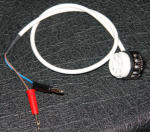
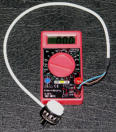

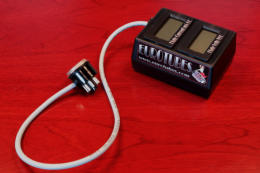
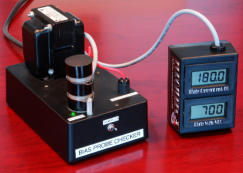
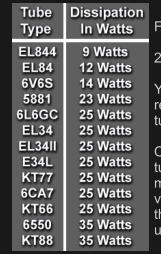


The video below shows the difference between the Pro One and using a simple probe and a multimeter.
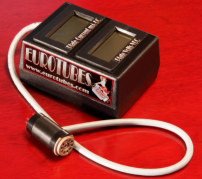
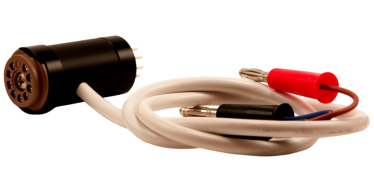
© 1998 - 2020 Eurotubes Inc. All Rights Reserved
All text and images on this website may not be used without express permission. All prices
and product information subject to change without notice.

























